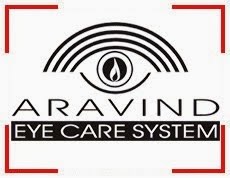S A Sagar
http://urdutahzeeb.net/health/articles/how-to-care-for-your-eyes
 Although we use our eyes everyday, we rarely pay attention to them until there is some serious problem. You can maintain perfect eyesight for most of your life by following some simple remedies.
Although we use our eyes everyday, we rarely pay attention to them until there is some serious problem. You can maintain perfect eyesight for most of your life by following some simple remedies.
William Blake described the eyes as the “windows of the soul.” Practically speaking, our eyes are the windows through which we view the world around us. Either way, there’s no question that we place great value on our eyes and our vision. Surveys have shown that of the five senses, sight is the one that people fear losing the most.
Given the important function our eyes perform for us, it would seem to follow that we’d give them the best care possible, but sometimes we get too busy or we forget to do a few simple things that can keep our eyes healthy. Well, in this article, we will give you all the eye care tips you need over the course of the following sections:
* Protecting Your Eyes
The first part of taking care of your eyes is to make sure they do not get injured in the first place. First, we will show you how proper nutrition will keep your eyes strong and healthy. Remember when you were a kid and your mom told you that carrots would improve your eyesight? Well, she might be right. Next, we tell you how to prevent eye injuries whether you’re playing sports or doing household chores. We will also tell you when to wear safety glasses and what kinds will work best for you.
* Preventing Eye Problems
Your daily habits could be seriously injuring your eyes. Without you knowing or feeling it, your eyes could be slowly deteriorating from abuse. First, we will tell you about ultraviolet light, the damage it can cause, and why you need the UV protection from your sunglasses. We will also tell you about eyestrain and whether or not it’s true that sitting too close to the TV will harm your eyesight. We will also give you special eye care tips for diabetics and tell you why you should be diligent about your eye doctor appointments.
* Congenital Eye Disorders
In a certain sense, some people are just born with defective eyes. Like other congenital disorders, there are many eye problems that are encoded into the individual’s genetics. There disorders can include fairly simple problems like near sightedness or far sightedness, or they can be debilitating problems like glaucoma. In this section, we will tell you the symptoms of these disorders and the available treatments. We will also let you know what over-the-counter help you can get for failing vision.
* Temporary Eye Conditions
Even with the best care, eye problems will eventually crop up. Whether it is just a pesky infection, or blurriness caused by overuse, there are many temporary eye conditions that can be quite frightening. In this section, we will cover all the major eye problems like pinkeye, dry eyes, red eyes, and sties. We will also let you know about the danger of babies and pinkeye and give a guide for how and when to buy eyedrops.
An Important Aspect of Health
If you were asked, “Do you take care of your eyes once a week or at least once a month?”, the most common reply would probably be in the negative. The eyes are considered to tbe the most important organ in ourt body and yet, people neglect to care for them.
Although we use our eyes everyday, we rarely pay attention until there is some serious problem. Ayurveda advises to take care of health while in a healthy state. You can maintain perfect eyesight for most part of your life by following some simple remedies.
* • Every morning after waking up, fill your mouth with water, close the eyes and sprinkle water on them about 10-15 times. Be sure, as Ayurveda advises, to wake up before sunrise. Do not use hot water to wash the eyes.
* • Do not wash the eyes or face when the body is sweating, especially after hard physical exercise or after being exposed to heat and sun.
* • Do not stare continuously, specially while looking at long distance objects. Blinking or giving rest to the eyes is good. Do not look at the objects in bright sunlight for a long time. Avoid reading, writing or working with eyes in improper light, or when the light is not sufficient. Take a break and give rest to the eyes if you feel heaviness or tiredness in the eyes.
* • Staying up late in the night and sleeping after sunrise is harmful for the eyes. In case of staying up late, drink a cup of water after each hour or half hour.
* • Protect your eyes from dust, smoke, strong sunlight and strong wind. Avoid staying long in such conditions. In case you have to stay, blink often and massage the closed eyes gently with your palms.
* • Try to maintain regular and clean bowel movements. Constipation weakens the eyesight. In addition; too much anxiety, mental stress, grief, anger and worry are harmful for the eyes.
* • Regular eye exercise maintains perfect eyesight. One simple method of exercise is moving the eyeball – right and left; upwards and downwards and rotating it in the clockwise and anti-clockwise directions.
* • Another simple way of protecting of eyes is through ‘palming’. Rub the palms of both hands for about 30 seconds, close the eyes and gently place the warm palms over the eyes.
* • Eating cabbage and carrots is very beneficial for the eyes. These should be eaten raw. It is all right to drink cabbage and carrot juice mixed together or separately.
* • If Triphala (an Ayurvedic preparation) is available, you can wash the eyes with ‘Triphala water’. Put a teaspoonful of Triphala powder in a glass of water, and let it stay overnight. Strain the water and wash the eyes with it.
* • Putting one drop of honey in each eye once a week is also beneficial to the eyes. It causes a bit of irritation, but cleans the eyes.
Try these remedies and keep your eyes healthy and beautiful. These remedies can be used by everyone, including those having weak eyesight. Through these methods, one can even improve one’s weak eyesight and maybe even give up the use of spectacles forever.
This information is solely for informational purposes.
IT IS NOT INTENDED TO PROVIDE MEDICAL ADVICE.
E.mail: <sa.sagar7@gmail.com, sagar@urdutahzeeb.com
For information in Urdu visit our Blog : Composite Culture, Latest Urdu News






























 S A Sagar
S A Sagar S A Sagar
S A Sagar US National Institutes of Health (NIH) are reported to have discovered a new experimental drug capable of curing malaria with one, single dose,
US National Institutes of Health (NIH) are reported to have discovered a new experimental drug capable of curing malaria with one, single dose, Although we use our eyes everyday, we rarely pay attention to them until there is some serious problem. You can maintain perfect eyesight for most of your life by following some simple remedies.
Although we use our eyes everyday, we rarely pay attention to them until there is some serious problem. You can maintain perfect eyesight for most of your life by following some simple remedies.